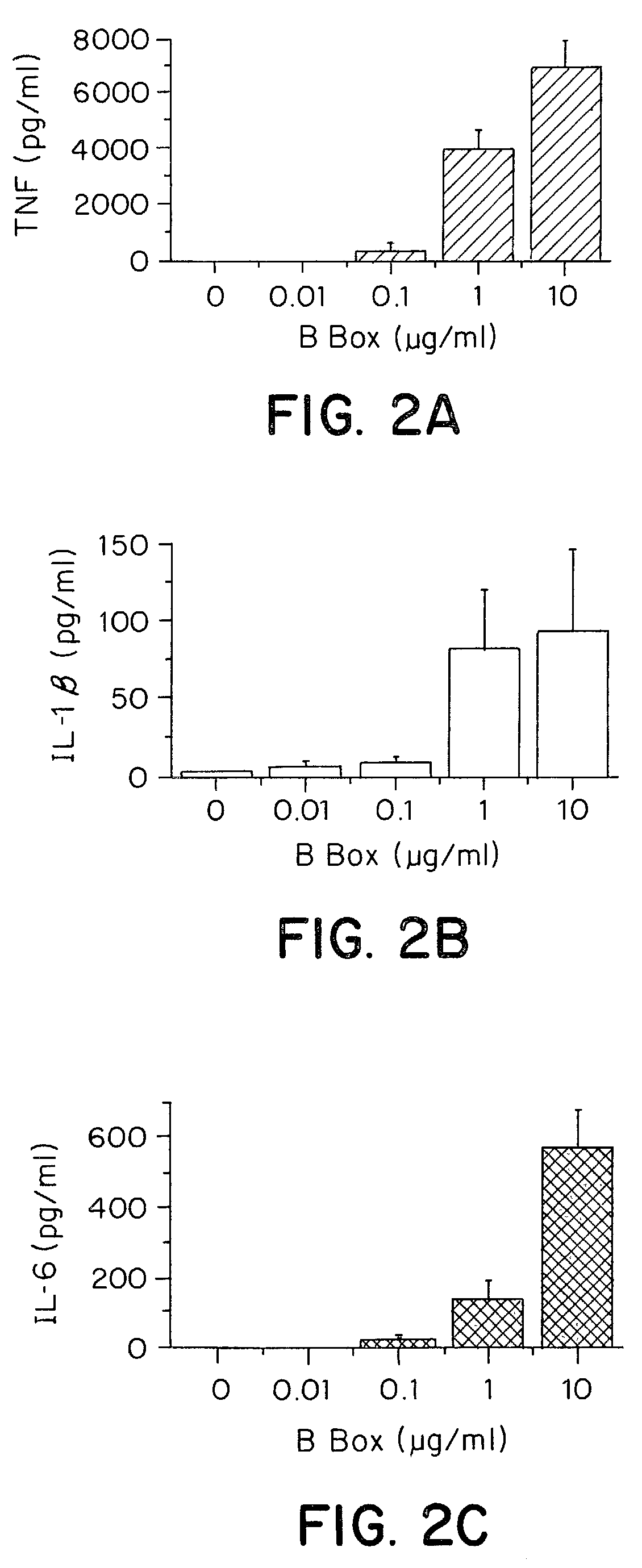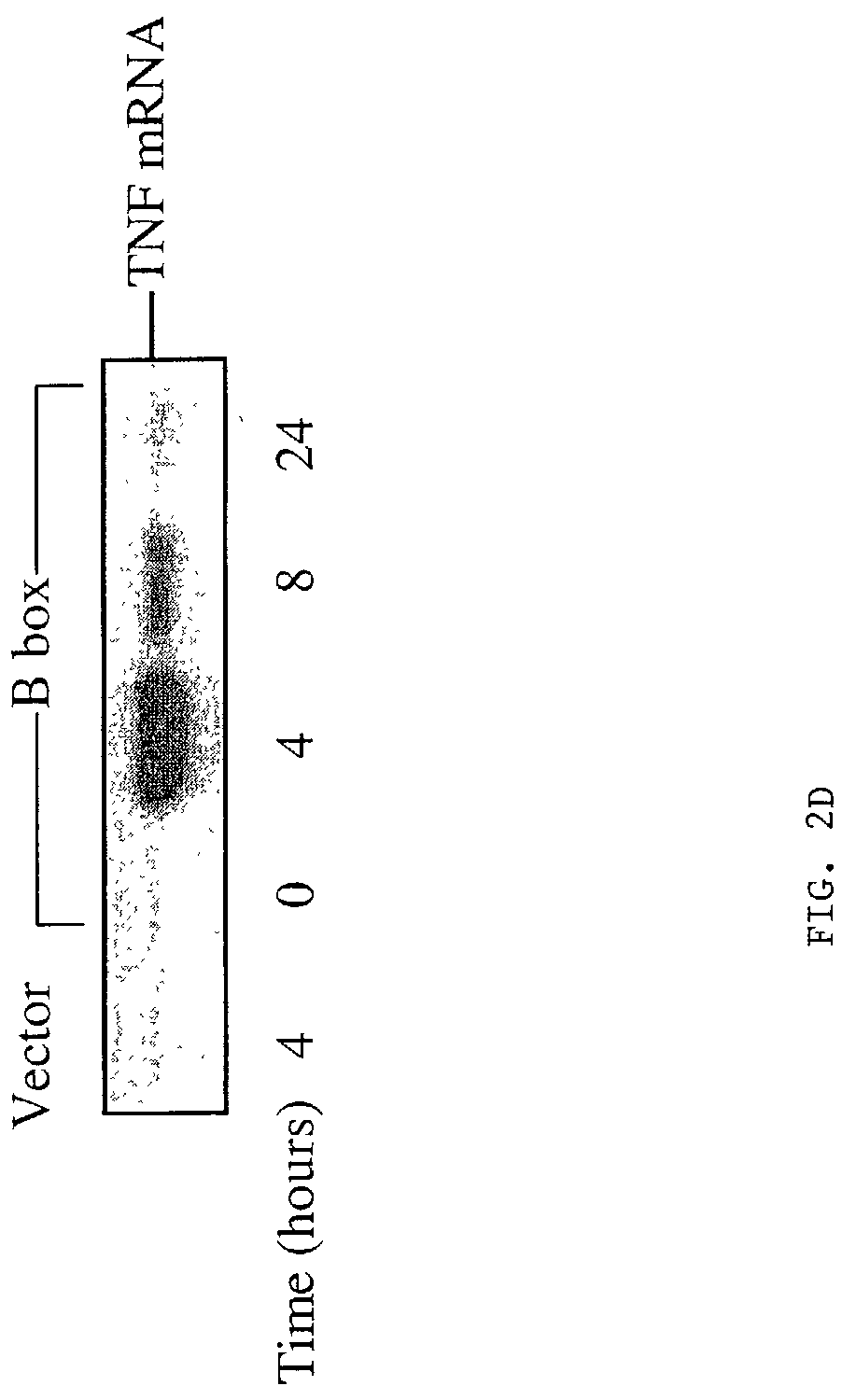Use of HMGB fragments as anti-inflammatory agents
a technology of hmgb fragments and anti-inflammatory agents, which is applied in the direction of bacteria, depsipeptides, peptide/protein ingredients, etc., can solve the problems of elevated serum hmgb1 levels that are toxic, and achieve the effect of inhibiting the release of proinflammatory cytokine and inhibiting the inflammatory cytokine cascad
- Summary
- Abstract
- Description
- Claims
- Application Information
AI Technical Summary
Benefits of technology
Problems solved by technology
Method used
Image
Examples
example 1
Materials and Methods
[0160]Cloning of HMGB1 and Production of HMGB1 Mutants
[0161]The following methods were used to prepare clones and mutants of human HMGB1. Recombinant full length human HMGB1 (651 base pairs; GenBank Accession Number U51677) was cloned by PCR amplification from a human brain Quick-Clone cDNA preparation (Clontech, Palo Alto, Calif.) using the following primers; forward primer: 5′ GATGGGCAAAGGAGATCCTAAG 3′ (SEQ ID NO:6) and reverse primer: 5′ GCGGCCGCTTATTCATCATCATCATCTTC 3′ (SEQ ID NO:7). Human HMGB1 mutants were cloned and purified as follows. A truncated form of human HMGB1 was cloned by PCR amplification from a Human Brain Quick-Clone cDNA preparation (Clontech, Palo Alto, Calif.). The primers used were (forward and reverse, respectively):
[0162]
Carboxy terminus mutant (557 bp):5′ GATGGGCAAAGGAGATCCTAAG 3′ and(SEQ ID NO:8)5′ GCGGCCGC TCACTTGCTTTTTTCAGCCTTGAC 3′.(SEQ ID NO:9)Amino terminus + B box mutant (486 bp):5′ GAGCATAAGAAGAAGCACCCA 3′ and(SEQ ID NO:10)5′ G...
example 2
Mapping the HMGB1 Domains for Promotion of Cytokine Activity
[0189]HMGB1 has 2 folded DNA binding domains (A and B boxes) and a negatively charged acidic carboxyl tail). To elucidate the structural basis of HMGB1 cytokine activity, and to map the inflammatory protein domain, we expressed full length and truncated forms of HMGB1 by mutagenesis and screened the purified proteins for stimulating activity in monocyte cultures (FIG. 1). Full length HMGB1, a mutant in which the carboxy terminus was deleted, a mutant containing only the B box, and a mutant containing only the A box were generated. These mutants of human HMGB1 were made by polymerase chain reaction (PCR) using specific primers as described herein, and the mutant proteins were expressed using a glutathione S-transferase (GST) gene fusion system (Pharmacia Biotech, Piscataway, N.J.) in accordance with the manufacturer's instructions. Briefly, DNA fragments, made by PCR methods, were fused to GST fusion vectors and amplified in...
example 3
HMGB1 B Box Protein Promotes Cytokine Activity in a Dose Dependent Manner
[0192]To further examine the effect of HMGB1 B box on cytokine production, varying amounts of HMGB1 B box were evaluated for the effects on TNF, IL-1B, and IL-6 production in murine macrophage-like RAW 264.7 cells. RAW 264.7 cells were stimulated with B box protein at 0-10 μg / ml, as indicated in FIGS. 2A-2C for 8 hours. Conditioned media were harvested and measured for TNF, IL-1β and IL-6 levels. TNF levels were measured as described herein, and IL-1β and IL-6 levels were measured using the mouse IL-1β and IL-6 enzyme-linked immunosorbent assay (ELISA) kits (R&D System Inc., Minneapolis, Minn.) and N>5 for all experiments. The results of the studies are shown in FIGS. 2A-2C.
[0193]As shown in FIG. 2A, TNF release from RAW 264.7 cells increased with increased amounts of B box administered to the cells. As shown in FIG. 2B, addition of 1 μg / ml or 10 μg / ml of B box resulted in increased release of IL-1β from RAW 26...
PUM
| Property | Measurement | Unit |
|---|---|---|
| Fraction | aaaaa | aaaaa |
| Fraction | aaaaa | aaaaa |
| Density | aaaaa | aaaaa |
Abstract
Description
Claims
Application Information
 Login to View More
Login to View More - R&D
- Intellectual Property
- Life Sciences
- Materials
- Tech Scout
- Unparalleled Data Quality
- Higher Quality Content
- 60% Fewer Hallucinations
Browse by: Latest US Patents, China's latest patents, Technical Efficacy Thesaurus, Application Domain, Technology Topic, Popular Technical Reports.
© 2025 PatSnap. All rights reserved.Legal|Privacy policy|Modern Slavery Act Transparency Statement|Sitemap|About US| Contact US: help@patsnap.com



